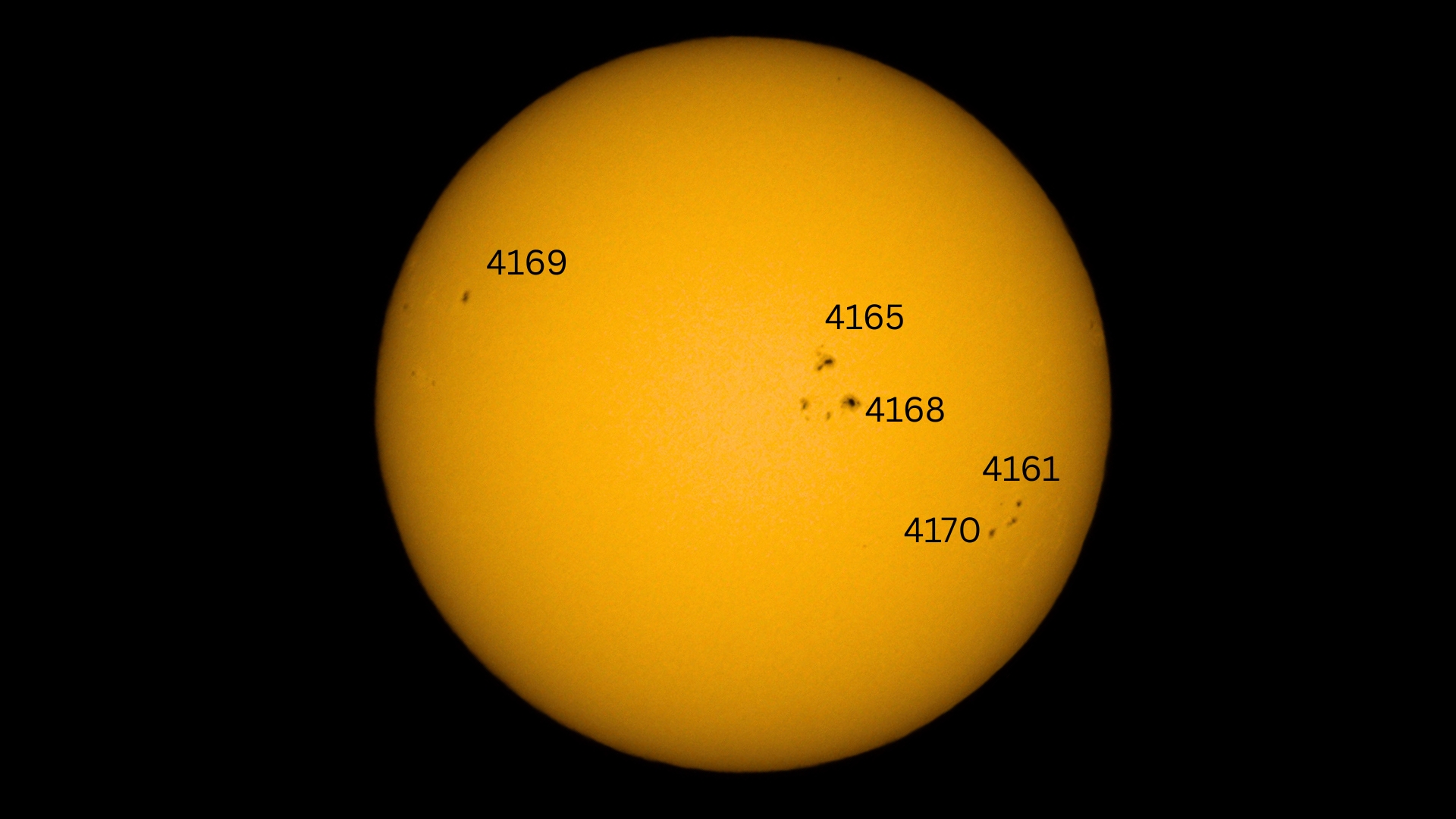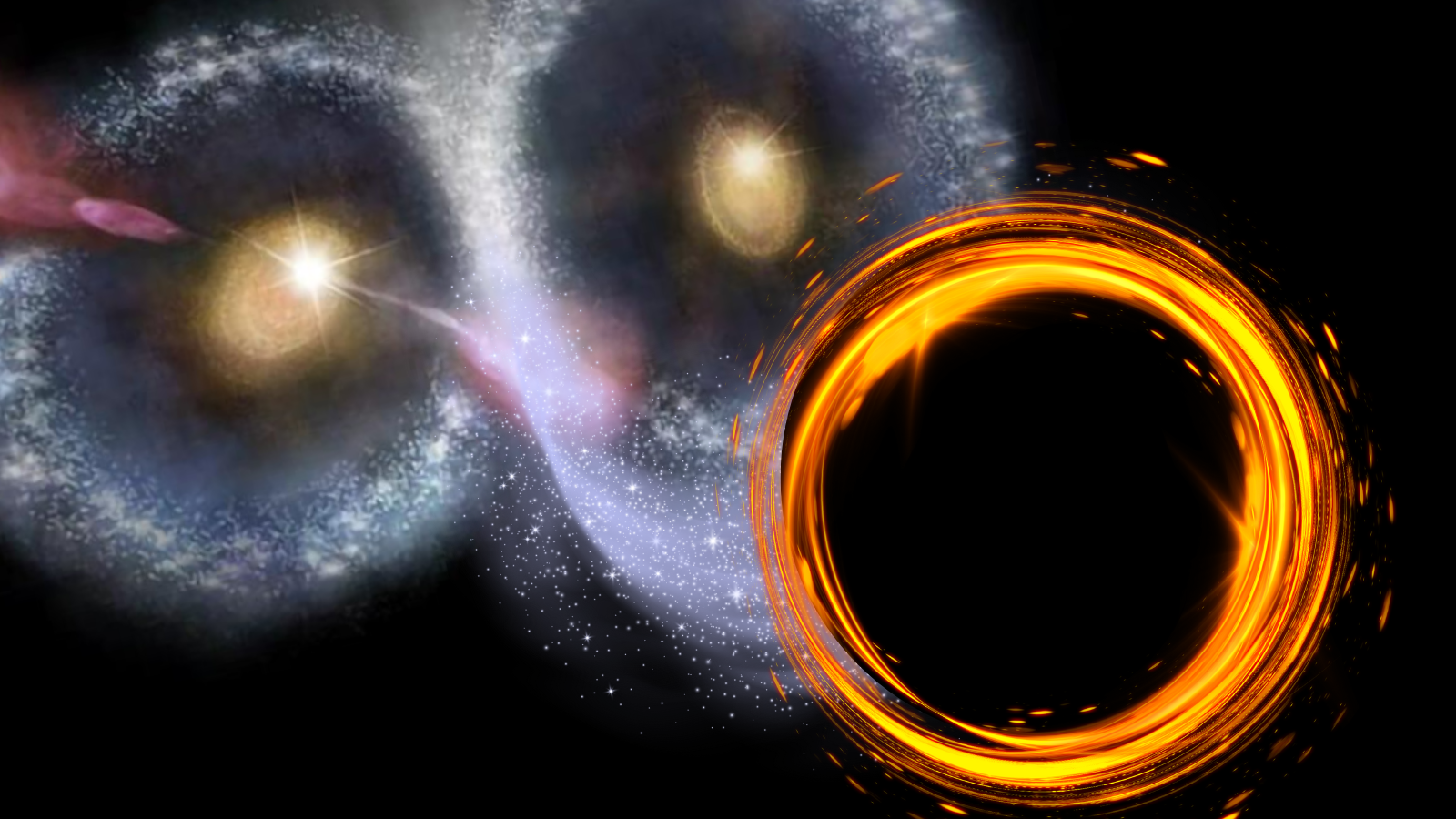Solar eruption from Earth-facing sunspot could trigger northern lights Aug. 8 (video)
The M4.4 solar flare unleashed a coronal mass ejection (CME) into space — and Earth might just receive a glancing blow.
Sunspot region 4168 is certainly making quite a name for itself!
Earlier this week, active region 4168 churned out three M-class flares within 24 hours, ending weeks of calm on the sun. Then, on Aug. 5, it fired off a strong M4.4-class flare, peaking at 11:58 a.m. EDT (15:58 GMT), and hurled a coronal mass ejection (CME) into space. But though the eruption came from almost smack-dab in the center of the sun's disk, a spot that usually spells "bullseye" for Earth, this one had a trick up its sleeve.
Instead of heading straight for us, the CME launched sideways, flinging most of its plasma westward, away from Earth. Still, space weather forecasters say there is a chance Earth may still receive a glancing blow from the CME on Aug. 8, which could trigger a minor (G1) geomagnetic storm, potentially sparking northern lights as far south as northern Michigan and Maine.
"Virtually center disk flare, CME goes sideways. Just Solar Cycle 25 things," aurora chaser Jure Atanackov posted on X, summing up the oddball behavior.
Even so, Earth might not entirely be in the clear. Atanackov pointed to NASA's WSA-ENLIL model, which "indicates the CME from the M4.4 flare may (despite its best efforts) still clip us." The model suggests a potential impact around 2:00 a.m. EDT (0600 UTC) on Aug. 8 — with a generous margin of error of ±8 hours.
CME impact? The NASA M2M WSA-ENLIL+Cone model indicates the CME from the M4.4 flare may (despite its best efforts) still clip us. The glancing blow is indicated on August 8th around 6h UTC (+/- 8 hrs). https://t.co/jFP7bSwulk pic.twitter.com/4XVMiAuLBLAugust 6, 2025
The U.K. Met Office agrees there's potential, noting that "as this region was located near the centre disk at the time, there is a likelihood of an Earth-directed component." However, they also say confidence in that forecast is low.
If the CME does brush past Earth, we could see auroras stretch south into high and even mid-latitudes, but only if the storm's magnetic orientation (a key ingredient for auroras) cooperates. Essentially, the CME's magnetic field needs to point southward — opposite to Earth's northward field — to effectively connect and transfer energy into our magnetosphere. If it points north instead, the "door is closed" and solar wind simply glances off, and the auroras may be a no-show.
For now, we wait and watch. As always with the sun — stay tuned.
Breaking space news, the latest updates on rocket launches, skywatching events and more!

Daisy Dobrijevic joined Space.com in February 2022 having previously worked for our sister publication All About Space magazine as a staff writer. Before joining us, Daisy completed an editorial internship with the BBC Sky at Night Magazine and worked at the National Space Centre in Leicester, U.K., where she enjoyed communicating space science to the public. In 2021, Daisy completed a PhD in plant physiology and also holds a Master's in Environmental Science, she is currently based in Nottingham, U.K. Daisy is passionate about all things space, with a penchant for solar activity and space weather. She has a strong interest in astrotourism and loves nothing more than a good northern lights chase!
You must confirm your public display name before commenting
Please logout and then login again, you will then be prompted to enter your display name.


